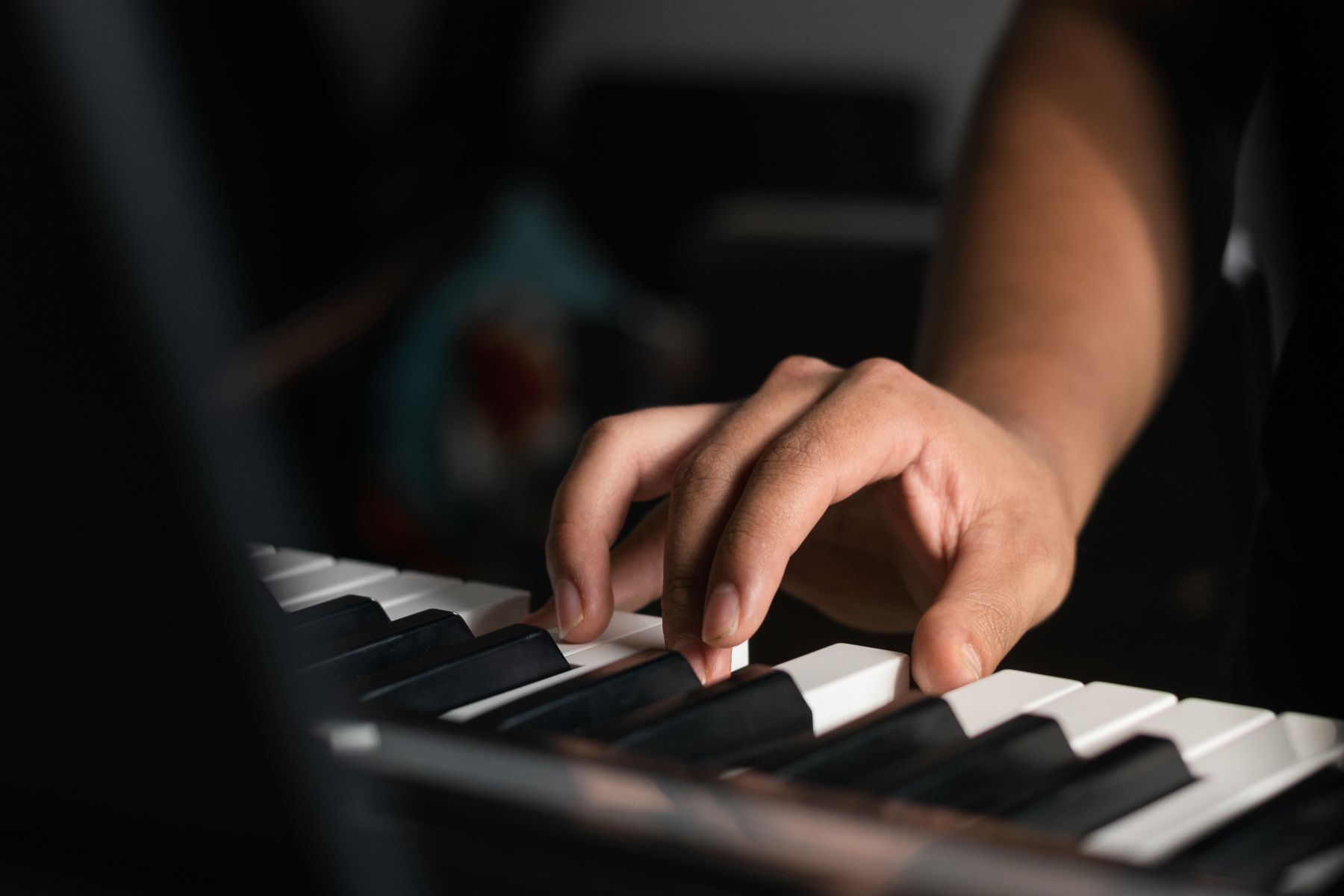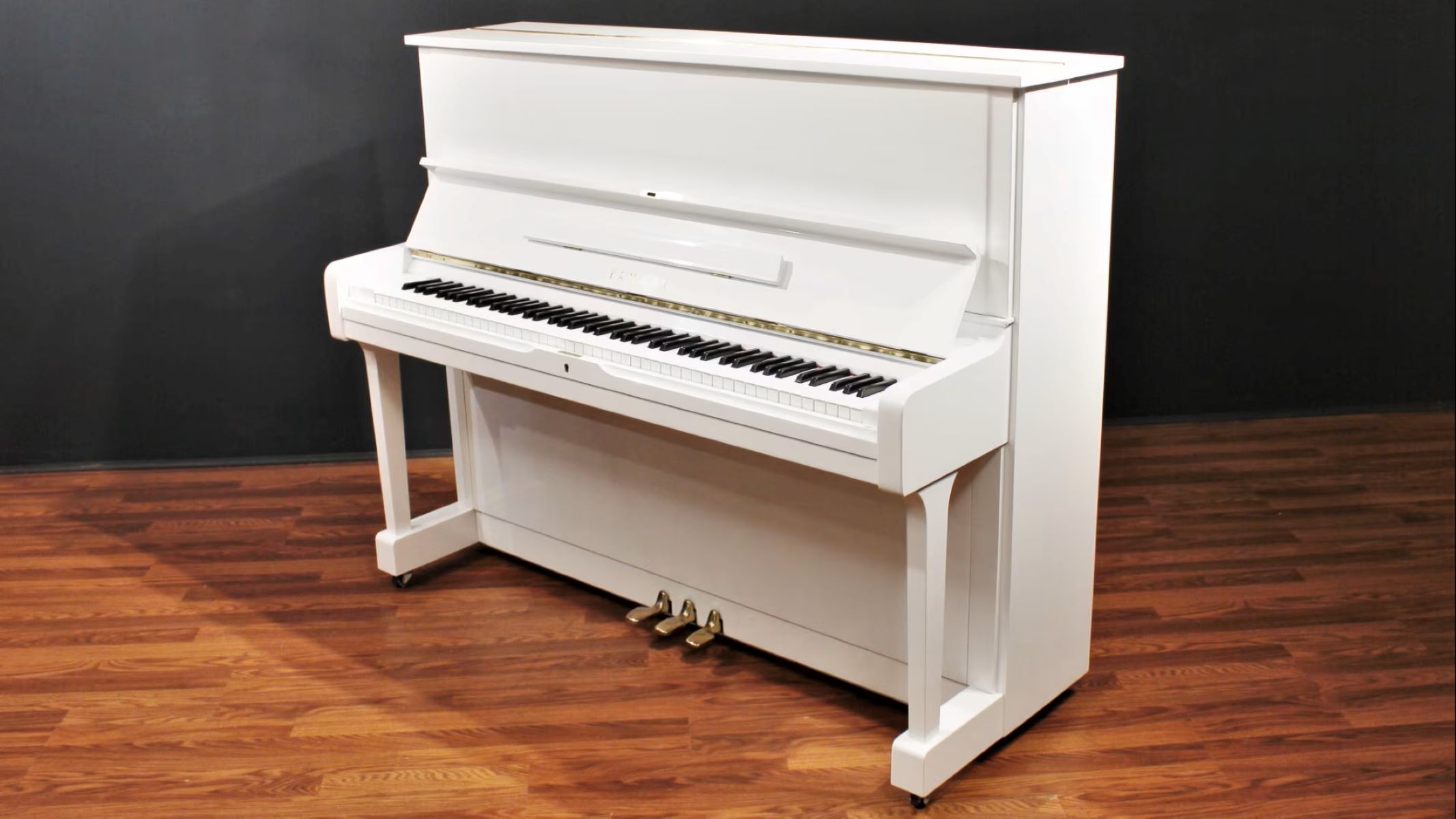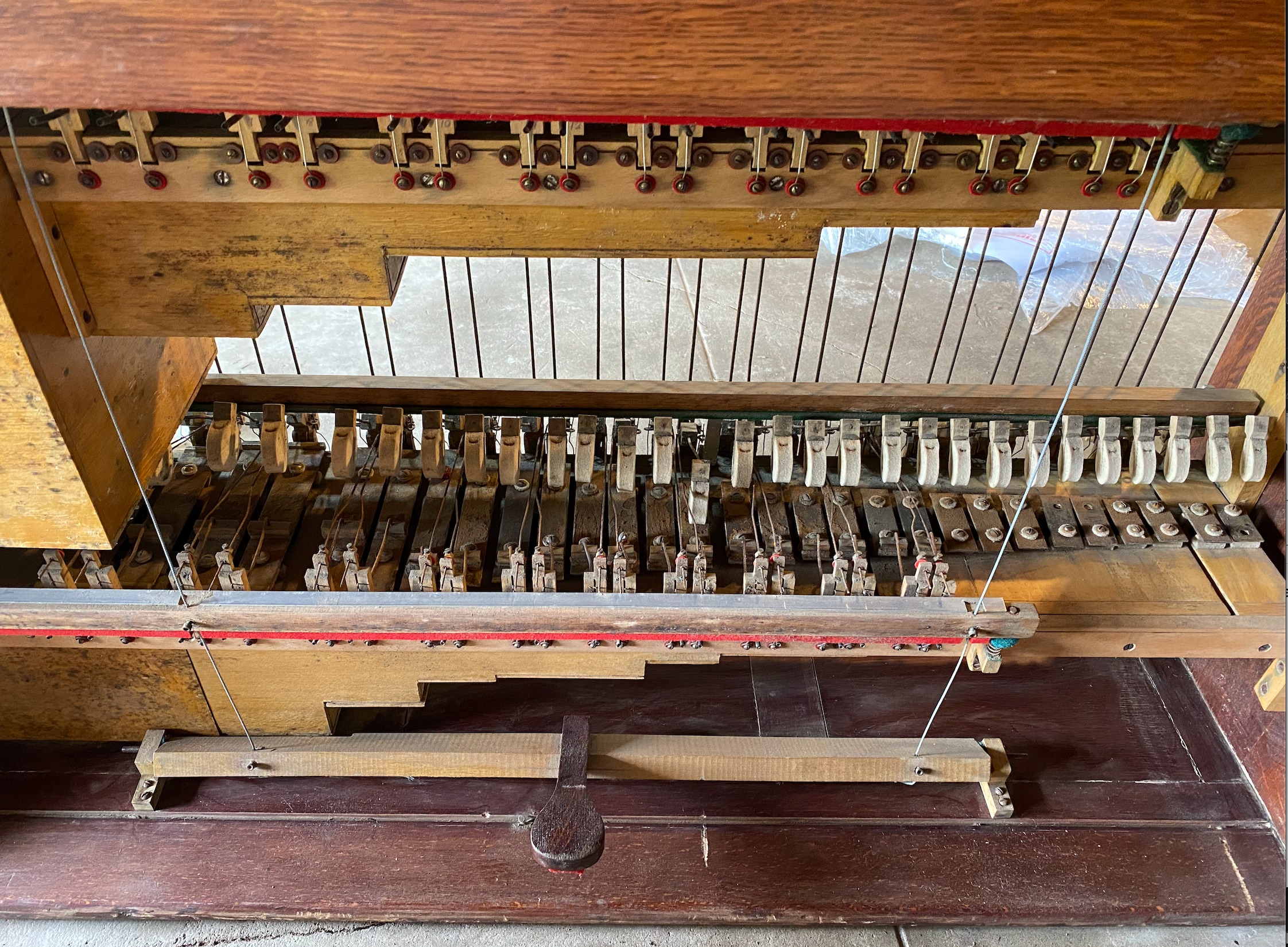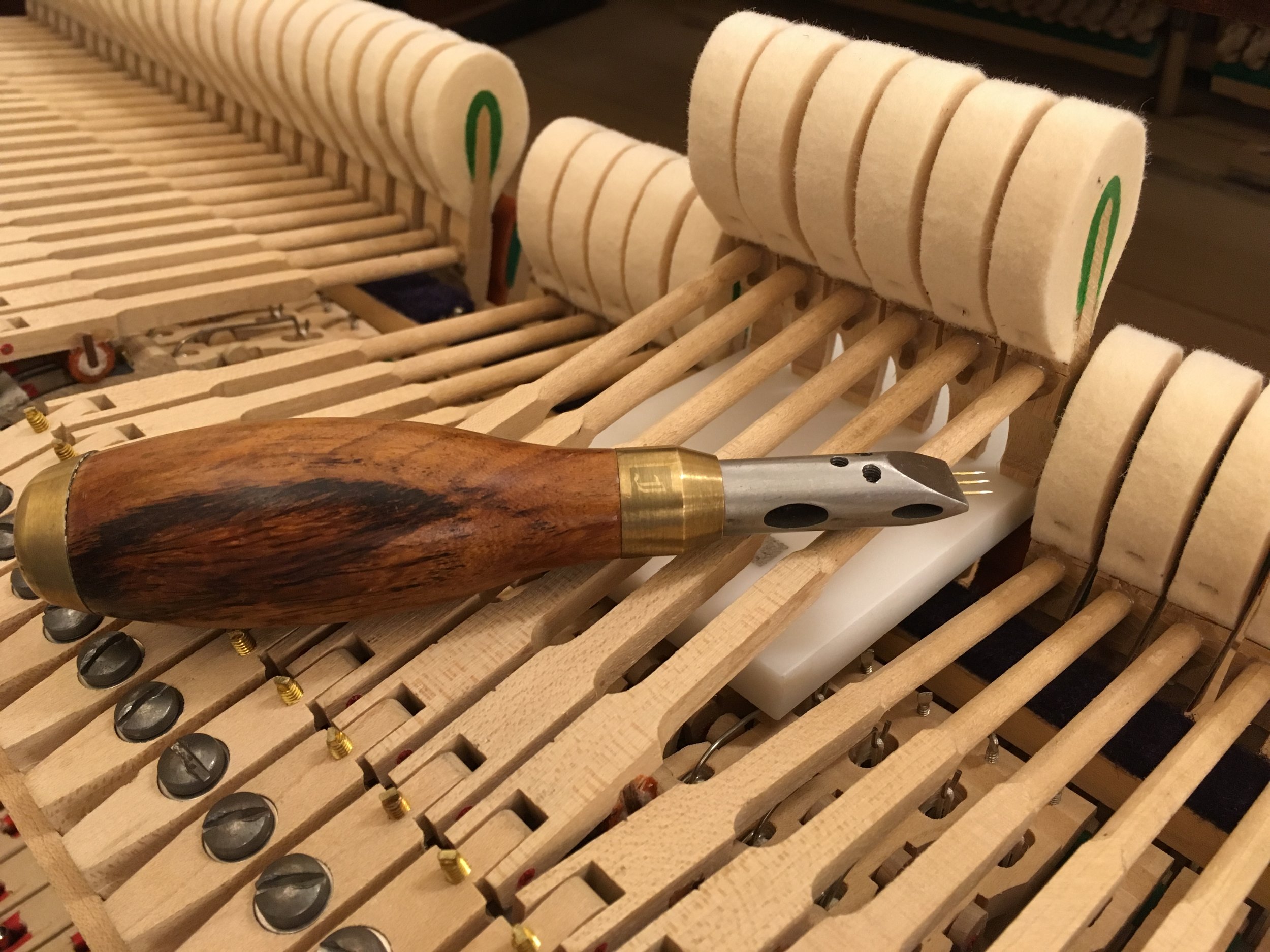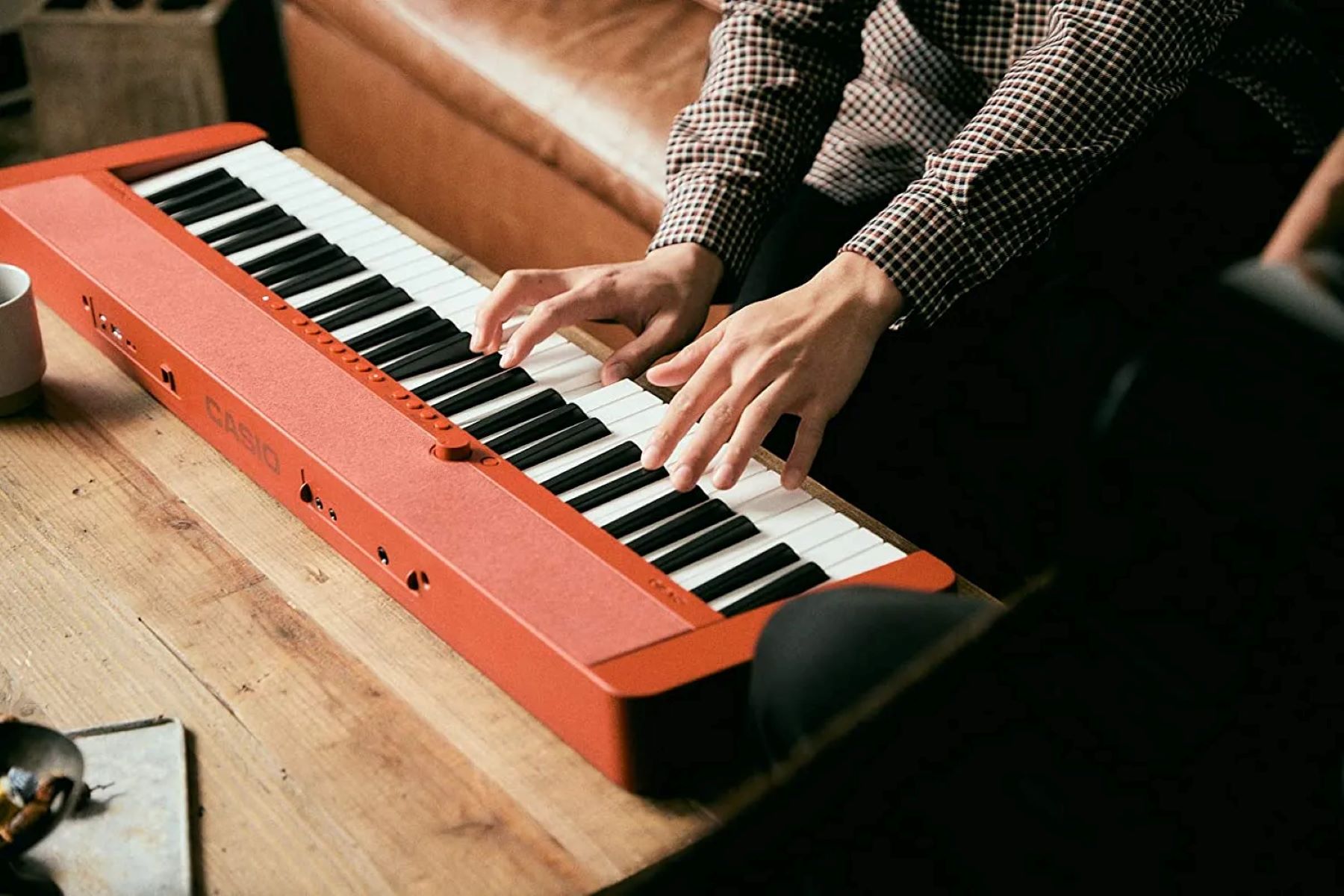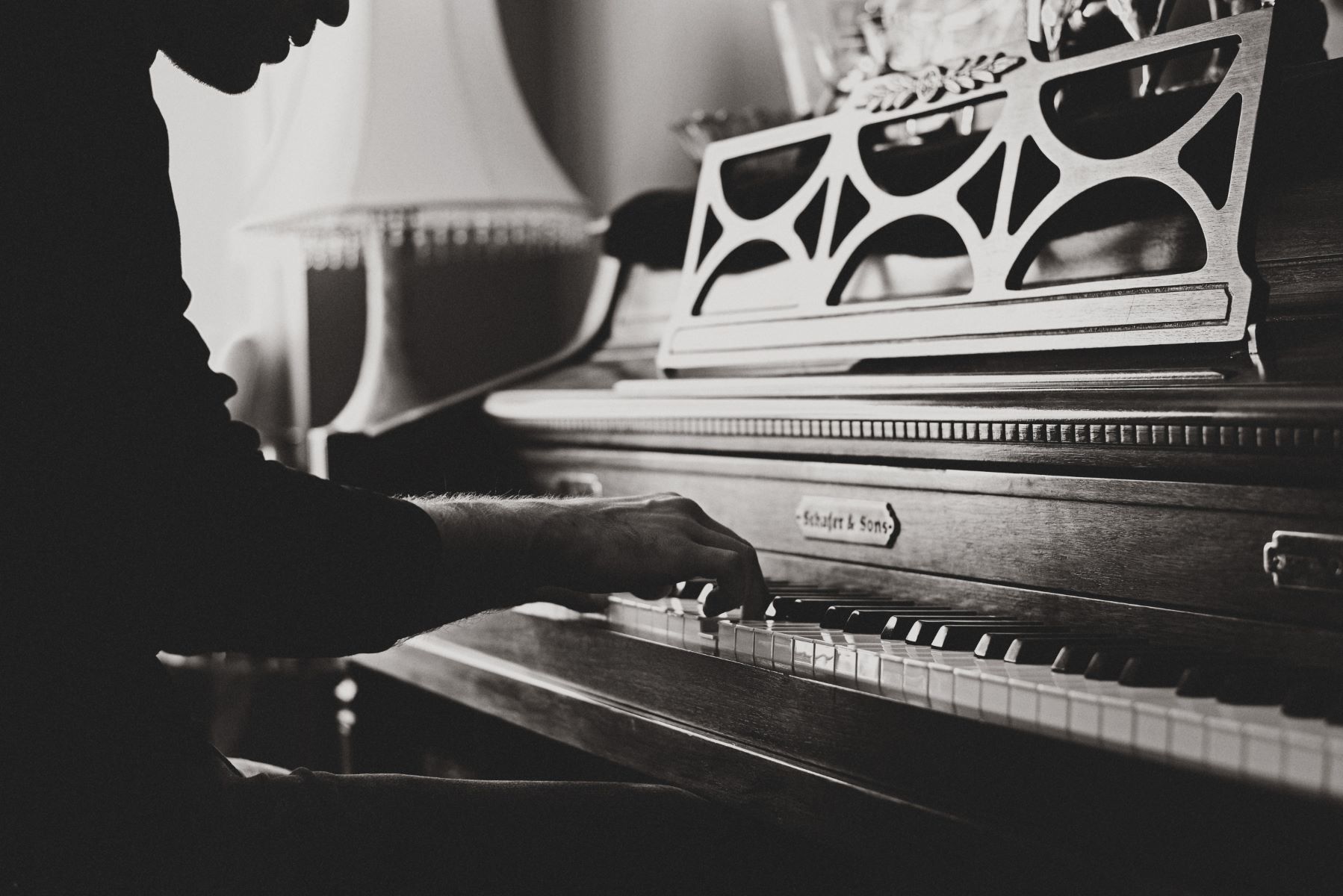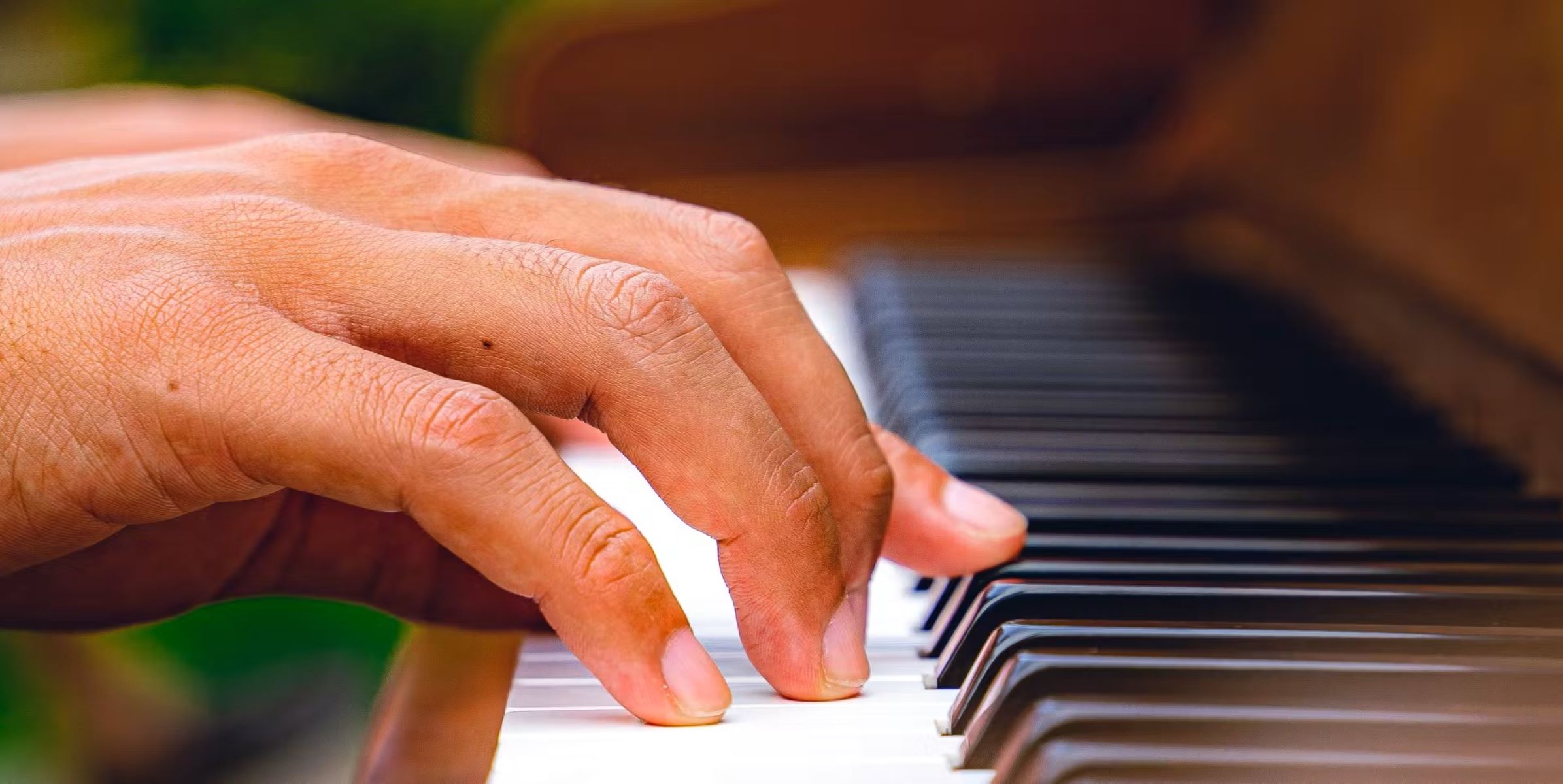Home>Instruments>Piano>What Is A Tie In Piano
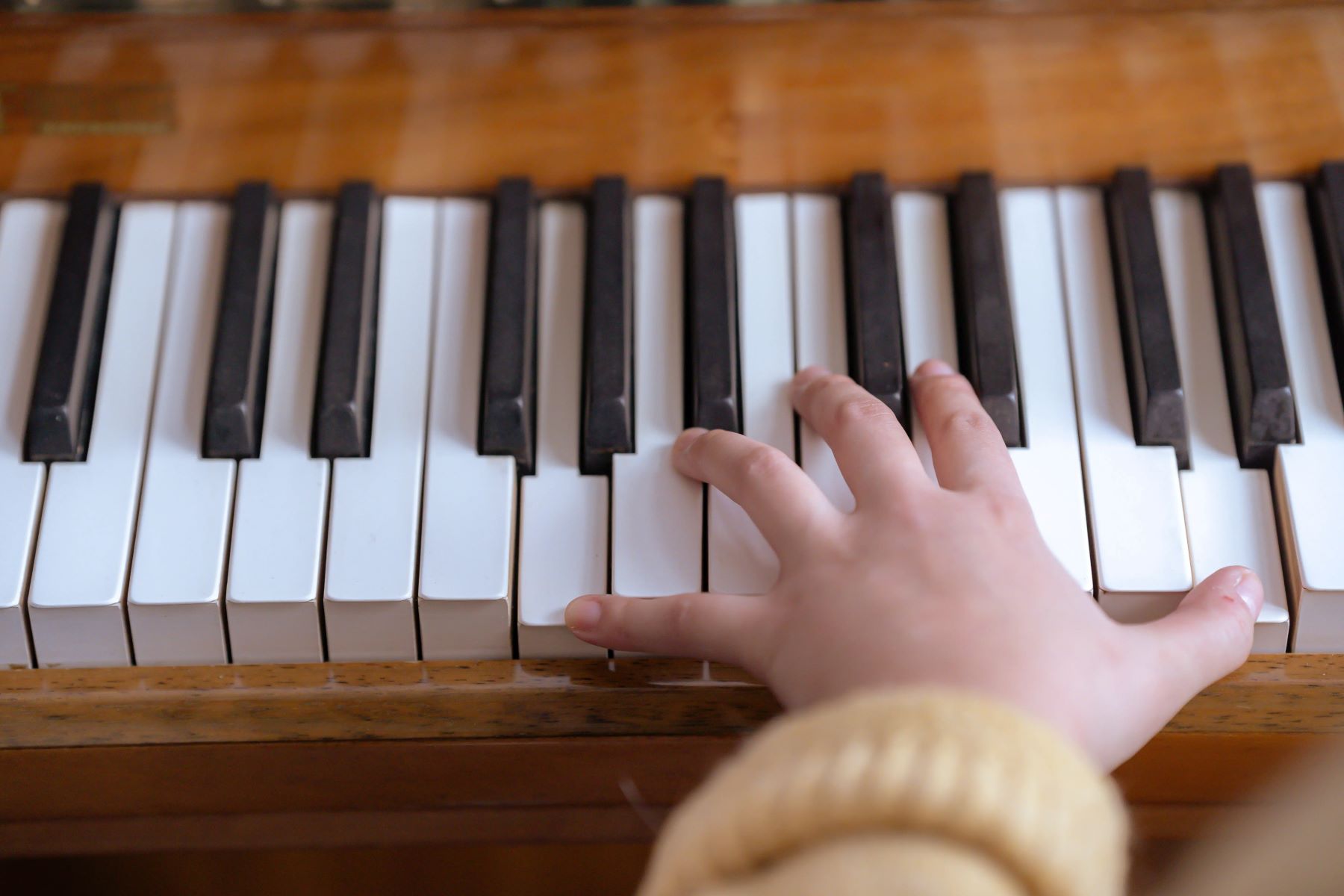

Piano
What Is A Tie In Piano
Published: February 11, 2024
Discover the concept of a tie in piano music, its purpose, and how to execute it effectively. Learn how ties enhance the musical flow and rhythm in piano playing.
(Many of the links in this article redirect to a specific reviewed product. Your purchase of these products through affiliate links helps to generate commission for AudioLover.com, at no extra cost. Learn more)
Table of Contents
Introduction
Playing the piano is a beautiful and intricate art form that requires a deep understanding of musical notation and technique. One fundamental aspect of piano playing is the use of ties, which play a crucial role in shaping the rhythm and expression of a musical piece. Understanding the concept of ties is essential for any aspiring pianist, as it directly impacts the interpretation and performance of a composition.
Ties in piano music serve to connect two or more notes of the same pitch, effectively extending the duration of the sound without rearticulating the note. This creates a seamless and flowing effect, allowing the music to sustain and resonate in a way that adds depth and emotion to the piece. In this article, we will delve into the intricacies of ties in piano music, exploring their purpose, notation, and practical application on the keyboard.
As we unravel the significance of ties in piano playing, we will also address common misconceptions and provide insights into how pianists can effectively incorporate ties into their performances. Whether you are a beginner eager to grasp the basics or an experienced player looking to refine your skills, this comprehensive guide will equip you with the knowledge and techniques needed to master the art of playing ties on the piano.
Definition of a Tie in Piano
In the realm of piano music, a tie is a musical notation symbol that connects two or more notes of the same pitch, indicating that they are to be played as a single sustained note. When a tie appears between two notes, it signifies that the combined duration of the tied notes should be performed as a continuous sound, without rearticulating the note. Essentially, the tie elongates the value of the note, allowing it to resonate and sustain for a prolonged period within the music.
Visually, a tie is represented by a curved line that arcs over the notes to be tied together, effectively merging them into a unified, elongated duration. This symbol is crucial in shaping the rhythmic structure and expressive quality of a musical piece, as it influences the duration and flow of individual notes within a melody or harmony.
Furthermore, it is important to note that ties can extend beyond two notes, connecting a series of consecutive notes of the same pitch to create a seamless and unbroken musical phrase. This continuous connection of notes through ties contributes to the overall fluidity and emotive resonance of the music, allowing for nuanced and expressive interpretations by the performer.
Understanding the definition and function of ties is fundamental for pianists, as it directly impacts the interpretation and performance of a composition. Mastery of this concept empowers pianists to imbue their playing with a heightened sense of continuity and expression, elevating the musical experience for both the performer and the audience.
Purpose of Ties in Piano
The utilization of ties in piano music serves multiple essential purposes that significantly influence the overall interpretation and performance of a musical piece. One of the primary functions of ties is to extend the duration of a note, allowing it to sustain and resonate seamlessly within the music. By connecting two or more notes of the same pitch, a tie effectively creates a unified, elongated sound, enriching the expressive quality of the composition.
Beyond simply prolonging the duration of a note, ties also play a crucial role in shaping the rhythmic structure of a musical passage. When employed judiciously, ties contribute to the fluidity and continuity of the music, enabling pianists to craft nuanced and emotive interpretations. By connecting consecutive notes through ties, pianists can create seamless melodic lines and harmonies, enhancing the musical phrasing and emotive impact of the performance.
Moreover, ties enable pianists to navigate complex rhythmic patterns with greater clarity and precision. In compositions with intricate rhythms, ties provide a means to sustain specific notes across different beats, facilitating a cohesive and cohesive rendition of the musical piece. This allows for a more organic and natural flow of the music, ensuring that the rhythmic intricacies are conveyed with finesse and accuracy.
Additionally, ties contribute to the dynamic shaping of a musical phrase, allowing for subtle variations in the intensity and expression of sustained notes. By skillfully applying ties, pianists can imbue the music with a sense of ebb and flow, creating moments of tension and release that enhance the emotional resonance of the composition.
Overall, the purpose of ties in piano music extends far beyond mere prolongation of notes; they are integral in shaping the rhythmic, expressive, and dynamic dimensions of a musical piece, empowering pianists to convey depth and emotion through their performances.
How Ties are Notated
In musical notation, ties are represented by a curved line that connects the heads of two or more notes of the same pitch. This curved line extends horizontally over the notes, indicating that they are to be played as a single sustained note. The tie symbol effectively merges the connected notes into a unified, elongated duration, visually conveying the instruction for the pianist to sustain the sound without rearticulating the note.
When notating ties, it is essential to place the curved line in a manner that clearly indicates which notes are to be tied together. The tie should be positioned in such a way that it extends from the head of the first note to the head of the subsequent note, creating a seamless visual connection between the tied notes. This visual representation serves as a clear directive for the pianist to execute the tied passage as a continuous, sustained sound.
Furthermore, ties can extend beyond connecting two consecutive notes, encompassing a series of tied notes to create a prolonged, unbroken musical phrase. In instances where ties are utilized to connect multiple notes, the curved line extends over each tied note, visually uniting them into a cohesive and sustained musical entity. This notation technique allows composers to convey the desired duration and continuity of specific passages within the music, guiding pianists in their interpretation and performance.
It is important to note that ties can also span across barlines, indicating that the sustained note extends into the following measure. This notation effectively communicates the seamless continuation of the tied passage across the boundaries of individual measures, ensuring a smooth and uninterrupted flow of the music.
Overall, the notation of ties in piano music serves as a visual guide for pianists, conveying the specific instructions for sustaining and connecting notes to achieve a seamless and expressive rendition of the composition. By understanding and interpreting the notated ties accurately, pianists can effectively execute the desired rhythmic and expressive nuances within the music.
How to Play Ties on the Piano
Playing ties on the piano involves executing the connected notes as a single sustained sound, adhering to the rhythmic and expressive indications provided by the ties in the musical score. To effectively interpret and perform tied passages, pianists must employ specific techniques and approaches that enhance the continuity and emotive resonance of the music.
When encountering tied notes in a musical piece, pianists should approach the passage with a focus on seamless legato playing. Legato, characterized by smooth and connected phrasing, is essential for executing tied notes with fluidity and coherence. Pianists should aim to sustain the sound of the tied notes without interruption, utilizing subtle finger control and pedal techniques to achieve a seamless transition between the connected notes.
Furthermore, attentive listening and a keen sense of musical phrasing are crucial when playing tied passages on the piano. Pianists should strive to maintain a consistent and expressive sound throughout the duration of the tied notes, carefully shaping the dynamic and intensity of the sustained sound to convey the intended emotive quality of the music. This requires a nuanced approach to touch and articulation, allowing for subtle variations in tonal color and intensity within the tied passage.
Additionally, pianists should be mindful of the rhythmic context surrounding tied notes, ensuring that the sustained duration aligns with the overall rhythmic structure of the composition. By maintaining a precise sense of timing and pulse, pianists can execute tied passages with rhythmic accuracy, seamlessly integrating the sustained notes into the musical fabric without disrupting the underlying pulse of the piece.
Effective pedaling techniques also play a significant role in playing ties on the piano. Strategic and judicious use of the sustain pedal can enhance the resonance and sustain of tied notes, contributing to a rich and blended sound that complements the expressive intent of the music. Pianists should experiment with pedal control to achieve a balanced and resonant sound while navigating tied passages with clarity and precision.
In essence, playing ties on the piano demands a combination of technical control, expressive sensitivity, and rhythmic precision. By approaching tied passages with a focus on legato playing, attentive phrasing, rhythmic accuracy, and strategic pedaling, pianists can bring out the full emotive and expressive potential of tied notes, enriching the musical interpretation and performance.
Common Misconceptions about Ties in Piano Playing
Despite the fundamental role of ties in shaping the rhythmic and expressive qualities of piano music, several misconceptions and misunderstandings surround their interpretation and execution. Addressing these common misconceptions is essential for pianists to develop a clear understanding of how ties function within a musical context and to refine their approach to playing tied passages.
One prevalent misconception is the belief that ties solely serve to extend the duration of a note, leading to the assumption that the sustained sound should be approached with uniform intensity and expression. In reality, ties offer a nuanced opportunity for dynamic shaping and emotive interpretation. Pianists should recognize that tied notes can be infused with subtle variations in intensity and phrasing, allowing for expressive contouring and shaping within the sustained passage.
Another misconception pertains to the rhythmic execution of tied notes. Some pianists may mistakenly perceive tied passages as requiring a strict adherence to the notated duration, neglecting the inherent flexibility and fluidity that ties afford. It is crucial to understand that while tied notes maintain their cumulative duration, they also allow for subtle rhythmic elasticity, enabling pianists to imbue the sustained sound with organic phrasing and expressive nuance.
Furthermore, there is a misconception surrounding the pedaling technique for tied passages. It is often assumed that continuous and indiscriminate use of the sustain pedal is necessary to achieve a seamless and resonant sound. However, effective pedaling in tied passages involves judicious and selective pedal application, tailored to enhance the tonal color and resonance of the sustained notes without muddying the musical texture. Pianists should approach pedaling with discernment, aligning the pedal technique with the expressive intent and phrasing of the tied passage.
Additionally, there is a misconception that tied notes should be approached with a static and unvarying tonal quality. In contrast, tied passages provide an opportunity for pianists to explore subtle tonal shifts and variations, infusing the sustained sound with dynamic color and expression. By embracing the inherent flexibility of tied notes, pianists can elevate the emotive impact of the music and convey a heightened sense of musical depth and sensitivity.
Dispelling these common misconceptions is crucial for pianists to develop a nuanced and informed approach to playing tied passages. By recognizing the expressive potential and interpretive flexibility inherent in ties, pianists can unlock new dimensions of emotive resonance and musicality in their performances, enriching the overall artistic interpretation of piano music.
Conclusion
In conclusion, ties in piano music are indispensable elements that contribute to the rhythmic fluidity, expressive depth, and emotive resonance of a musical composition. Understanding the definition, purpose, notation, and execution of ties is essential for pianists seeking to convey nuanced interpretations and captivating performances. Ties serve as a means to connect and sustain notes, creating a seamless and continuous sound that shapes the melodic and harmonic contours of the music.
By embracing the expressive potential of tied passages, pianists can infuse their performances with dynamic phrasing, subtle tonal shifts, and rhythmic elasticity, elevating the emotive impact of the music. The judicious application of legato playing, attentive phrasing, rhythmic precision, and strategic pedaling allows pianists to harness the full expressive potential of tied notes, enhancing the overall artistic interpretation of piano music.
Furthermore, dispelling common misconceptions surrounding ties is paramount for pianists to develop a clear and informed approach to playing tied passages. By recognizing the interpretive flexibility and expressive nuances inherent in ties, pianists can unlock new dimensions of emotive resonance and musicality in their performances, enriching the overall artistic interpretation of piano music.
In essence, ties in piano music are not merely symbols on a musical score; they are conduits for emotive expression, rhythmic shaping, and dynamic continuity. Mastery of ties empowers pianists to imbue their performances with a heightened sense of musical depth and sensitivity, captivating audiences and elevating the artistic interpretation of piano music.
As pianists continue to explore the intricacies of ties in their musical journey, they embark on a path of discovery, creativity, and expressive artistry, embracing the boundless potential for emotive storytelling through the sustained and connected sounds that ties facilitate. With each tied passage, pianists have the opportunity to craft a narrative of profound musical expression, inviting listeners into a world of captivating beauty and emotive resonance.

